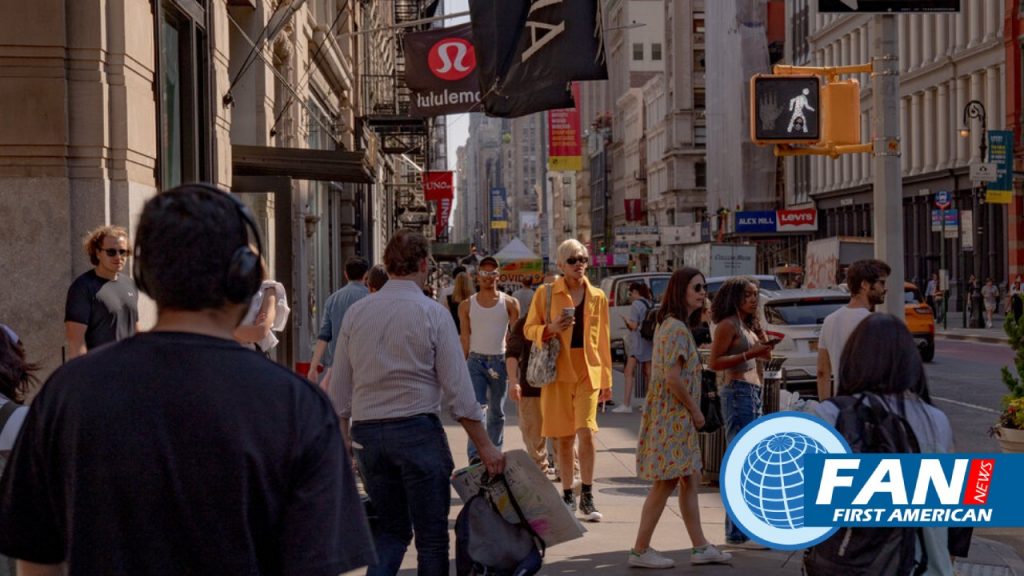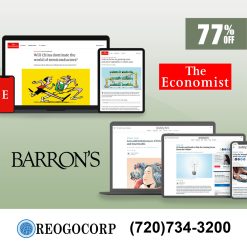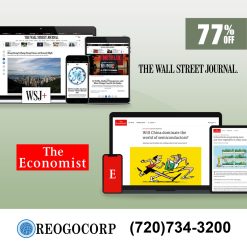Economic News, U.S. News
The GDP Report Outlines a Slow Economic Growth in The US
Economic output grew 1% in the fourth quarter of 2022 compared with a year earlier, the Commerce Department said. That compares with 5.7% growth in 2021 and 2.6% in 2019 ahead of the pandemic.
At least some of the 2022 slowdowns reflected a return to a more normal pace of growth after output surged amid pandemic reopenings, fiscal stimulus, and a waning pandemic the year before.
Consumers, the economy’s main engine, spent a solid pace of 2.1% in the final three months of last year. Business investment and government spending also contributed to growth last quarter.
Despite signs of resilience, many economists are concerned about the possibility of a U.S. recession this year. They expect the Federal Reserve’s efforts to curb high inflation through rapid interest-rate increases will trigger broad spending cutbacks and job losses.
Real GDP change from previous quarter

“Headwinds from the big jump in interest rates, consumers cutting back on discretionary spending, and weak economies overseas were big problems for the U.S. in late 2022,” said Bill Adams, chief economist for Comerica Bank. “I expect real GDP growth will likely turn negative in the first half of this year.”
Recent surveys of U.S. purchasing managers found that higher interest rates and persistent inflation weighed on demand in January in the manufacturing and service sectors. Parts of the economy also showed signs of cooling at the end of last year. Retail sales fell last month at the sharpest pace of 2022, existing-home sales fell for the 11th straight month, and hiring and wage growth eased.
The economy’s trajectory largely depends on how consumers fare in the coming months. There are signs consumers are starting to stumble. Shoppers have reined in spending on home electronics, furniture, and clothing after stocking up on those goods earlier in the pandemic.
Still, inflation is coming down from historic highs while wage growth remains strong in a tight labor market. Those dynamics could help consumers’ ability and willingness to spend.
Fed officials are preparing to slow interest-rate increases next week at their first meeting of the year and debate how much higher to raise them after gaining more confidence inflation will ease further this year.
GDP change from previous quarter.

The Fed had initially hoped it could bring down inflation with only a slowing in economic growth rather than an outright contraction, an outcome dubbed a “soft landing.”
“If we continue to get strong job growth and if we continue to get consumer spending on services, and companies don’t cut back on [capital expenditures], I think that adds fuel to the soft-landing story,” said Luke Tilley, chief economist at Wilmington Trust.
The broader economic toll from rising rates can take months to materialize, but one of the most interest-rate-sensitive sectors—housing—is showing signs of pain due to increasing mortgage rates. Residential investment declined last year, while home sales fell almost 18% in 2022 from the previous year.
Final sales to private domestic purchasers, a measure of consumer and business spending that gauges underlying economic demand, cooled in the second and third quarters of 2022 from previous quarters, the Commerce Department said.
StoryBright Films, which provides photography and planning services for elopements in the Blue Ridge Mountains, photographed 16 couples’ elopements last year, down from 20 in 2021, said Mark Collett, the company’s co-owner.
Mr. Collett said his small business received many inquiries and engaged in conversations with many potential clients last year. But more couples expressed concern about their financial situations and ability to pay for a big event than a year earlier.
“We would even get as far as sending them a contract to book, but then they got cold feet,” Mr. Collett said.
Subscribe today and get 52 weeks of The WSJ Print Edition for $318
For 2022 marriages, he added that clients tended to book at the bottom and top ends of the price range rather than the middle.
Purchasing power from paychecks fell for middle-income households last year, while it rose for lower-income and higher-income families. Many lower-income households benefited from wage increases and pandemic savings, while higher-income households had a large enough savings buffer to spend aggressively.
Now, there are signs that Americans are working through their savings. Households saved 2.4% of their disposable income in November, down from a peak of 33.8% in April 2020. Government stimulus left many consumers flush with cash but with few opportunities to spend during lockdowns.
Camreo offers nationwide Broker Price Opinions and AVM Products









